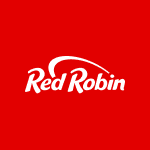Red Robin Q3 2021 Earnings Report
Key Takeaways
Red Robin Gourmet Burgers, Inc. reported a restaurant revenue of $270.2 million and a Restaurant Level Operating Profit as a percentage of restaurant revenue of 12.5% for the third quarter of 2021. Comparable restaurant revenue increased 34.3% over the same period in 2020, and increased 0.6% compared to the same period in 2019.
Restaurant revenue of $270.2 million and Restaurant Level Operating Profit as a percentage of restaurant revenue of 12.5%.
Third quarter 2021 comparable restaurant revenue increased 34.3% over the same period in 2020, and increased 0.6% compared to the same period in 2019.
Comparable restaurant revenue improving, up 4.0% for the first period of the fourth fiscal quarter compared to 2019, driven by strategic growth initiatives and improvements in staffing levels.
Off-premises sales sustained at high levels, comprising $81.0 million of comparable restaurant revenue.
Red Robin
Red Robin
Red Robin Revenue by Segment
Revenue by Segment
Forward Guidance
The Company currently expects the following for full year 2021: Mid-single digit commodity and wage inflation. Selling, general and administrative costs between $120 and $130 million. Capital expenditures of $45 to $55 million.
Positive Outlook
- Continued investment in maintaining our restaurants and systems capital.
- Donatos® expansion to approximately 120 restaurants, including approximately 40 restaurants in our fourth fiscal quarter.
- Digital guest and operational technology solutions.
- Off-premises execution enhancements.
Challenges Ahead
- Mid-single digit commodity and wage inflation.
- Uncertainty caused by the on-going COVID-19 pandemic.
- Industry labor and supply chain challenges
- Inflationary pressures

